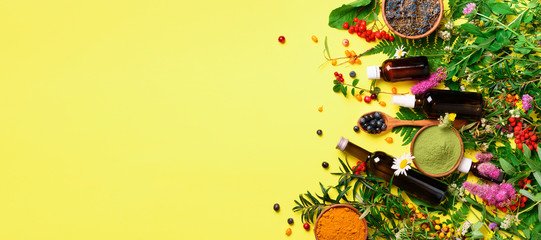If you are a female from age 13 to 55, there’s a good chance you may have experienced PMS (Premenstrual Syndrome) at some point in your life. PMS is a collection of symptoms, the hallmarks of which are:
-Bloating and other digestive woes
-Water retention
-Food cravings (like starch and sweets–chocolate being a favorite!)
-Headaches
-Fatigue
-Irritability
-Mood swings
If any of these symptoms sound familiar to you, we have dedicated this post to help you find natural solutions for PMS relief. At Balanced Care, we are committed to helping you work with your body’s own innate intelligence to return to a place of balance and ease when one or more of your body systems have taken a health “detour.”
Read on for several natural PMS solutions, or give us a call today to speak with one of our naturopathic professionals about a customized treatment plan for you.
When Does PMS Start?
Our female bodies are designed to run on a well-choreographed cascade of hormones during our child-bearing years. Even if you never become pregnant, this hormone cascade is what gives a general rhythm to each month as a woman. If our inner hormone dance derails, PMS symptoms are more likely to occur.
Here’s how the female hormone dance works:
-Follicle Stimulating Hormone (FSH) is released by the pituitary gland in the brain, telling a follicle in the ovary to mature. A follicle is a tiny sac in your ovary that contains an egg.
-Luteinizing hormone (LH) is also released from the pituitary gland, sending a message to the mature follicle to burst from the ovary, sending an egg into the adjacent fallopian tube, this is called “ovulation.”
-During follicle maturation, estrogen produced in fat tissue, adrenal glands, and ovaries works to thicken the lining in the uterus in preparation for a fertilized egg traveling down the fallopian tube
-Another hormone called progesterone acts as a control to balance the effects of estrogen and ensure the uterine lining does not get too thick. Progesterone levels drop if the egg remains unfertilized by sperm. When progesterone drops, the lining of uterus the sheds, and this is a period.
PMS symptoms can begin after ovulation and before a period. PMS symptoms may be stronger a few years after menstruation starts at puberty and again during perimenopause, as early as age 35.
What to do When Your period Begins with an Exclamation Point

PMS symptoms are a message from your body. If your PMS symptoms are intense, this can indicate that your body needs something it doesn’t have, like more or less of a particular hormone, or even a nutrient or mineral that can be easily added to your chemistry and may bring your body back to ease and balance.
Ideally, a period should “sneak up” on you gently, be with you for a couple of days, and then leave as quietly as it came on. Here are a few ways to begin decoding the messages your body is sending with PMS:
- Track your period manually or with a period tracker app
- Knowledge is power, and if you know when (or if) you are ovulating, it’s easier for us to help with solutions if your hormones are not dancing well together.
- See your doctor. To rule out severe conditions, it’s always a great idea to ask your doctor for a precise diagnosis before exploring treatment.
- Get a blood test. Hitting the lab for iron, magnesium, iodine, thyroid hormone, and female hormone panel are also necessary before beginning a treatment protocol.
(Psst. At Balanced Care, we are happy to schedule a blood test as part of your initial appointment with us.)
Managing PMS–Naturally
There are a variety of ways to minimize PMS symptoms while working to bring our period hormones into graceful collaboration. Try the following methods on your own while working with your health care team on long-term relief:
Exercise.
Exercise elevates mood and can alleviate pain by releasing endorphins in the body, our natural pain killers. Work out at a pace that feels good for you. A walk, a stretch, or an easy yoga class a few times during your premenstrual week may do the trick to calm your irritability, lesson headache pain, or decrease cramps.
Eat a balanced diet.
Even though food cravings can sometimes get the best of us before and during a period, do your best to eat the following:
- Fruits
- Veggies (Especially green, leafy ones)
- Lean protein
- Healthy fats (Omega 3s as a priority)
- Whole grains
Also, try limiting these foods to help PMS symptoms:
- Caffeine
- Alcohol
- Inflammatory foods, like cow’s dairy and gluten
We know, this particular wellness step seems to be part of the treatment for just about every condition out there. Even though the advice “eat a balanced diet” may sound cliche, supporting your whole system with nutrient-dense, whole foods is the foundation for living in balance and ease.
Once you have blood work done to find out if you have any nutrient deficiencies that could be worsening your PMS symptoms, you can add those nutrients in via food or supplements, with your doctor’s recommendation.
Some supplements that are proven to help with PMS symptoms are:
- Magnesium ( for bloating and breast pain)
- Vitamin D (can help improve mood)
- Zinc (to control acne and improve immune function)
- Iron (improves fatigue and can lighten heavy bleeding)
- Calcium (may improve mood swings)
Periods are Natural, and Managing PMS can be Natural Too

Remember that periods are a natural part of being female. Fluctuating hormones and the PMS symptoms that can accompany them are not necessarily a disease to be treated. Instead, they are the start of a conversation.
Your PMS symptoms should alert you to a hormone dance that could be out of balance. The goal of naturopathic treatment at Balanced Care is to decode the language of your body into words and signals that you can readily understand and respond to.
At Balanced Care, we strive to make all your inner “arguments” into beautiful collaborations between your body and your mind. We pair this internal collaboration together with real-world tools and treatment protocols so you can live your best life–with or without chocolate cravings! Visit our website to get started on your PMS natural healing path.

